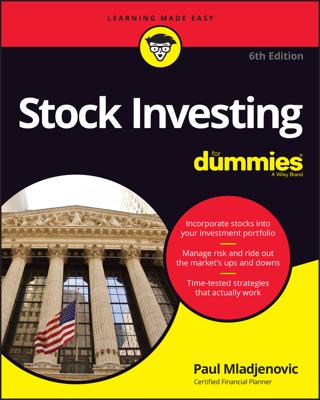Frequently, management teams decide to do a stock split. A stock split is the exchange of existing shares of stock owned by an investor for new shares from the same company. Stock splits don’t increase or decrease the company’s capitalization; they just change the number of shares available in the market and the per-share price.
Typically, a company may announce that it’s doing a 2-for-1 stock split. In this situation, the price of the stock is cut in half, and current shareholders double the number of shares they own. Companies do other splits, such as a 3-for-2 or 4-for-1, but 2-for-1 is the most common split.
Qualifying for a stock split is similar to qualifying to receive a dividend — you must be listed as a stockholder as of the date of record. Keep good records regarding your stock splits in case you need to calculate capital gains for tax purposes.
Ordinary stock splits
An ordinary stock split — when the number of stock shares increases — is the kind investors usually hear about. If you own 100 shares of Dublin, Inc., stock (in certificate form, at $60 per share) and the company announces a stock split, you receive in the mail a stock certificate for 100 more shares. Each share of the stoc is adjusted to a $30 value.
Not all stock is in certificate form. Stocks held in a brokerage account are recorded in book entry form. Most stock, in fact, is in book entry form. If you keep the stock in your brokerage account, check with your broker for the new share total to make sure you’re credited with the new number of shares after the stock split.
An ordinary stock split is primarily a neutral event, so why does a company bother to do it? The most common reason is that management believes the stock is too expensive, so it wants to lower the stock price to make the stock more affordable and therefore more attractive to new investors.
Studies have shown that stock splits frequently precede a rise in the stock price. Although stock splits are considered a non-event in and of themselves, many stock experts see them as bullish signals because of the interest they generate among the investing public.
Reverse stock splits
A reverse stock split usually occurs when a company’s management wants to raise the price of its stock. Just as ordinary splits can occur when management believes the price is too expensive, a reverse stock split means the company feels that the stock’s price is too cheap. If a stock’s price looks too low, that may discourage interest by individual or institutional investors.
Management wants to drum up more interest in the stock for the benefit of shareholders (some of whom are probably insiders).
The company may also do a reverse split to decrease costs. When you have to send an annual report and other correspondence regularly to all the stockholders, the mailings can get a little pricey, especially if you have lots of investors who own only a few shares each. A reverse split helps consolidate shares and lower overall management costs.
Technically, a reverse split is considered a neutral event. However, just as investors may infer positive expectations from an ordinary stock split, they may have negative expectations from a reverse split because a reverse split tends to occur for negative reasons.
One definitive negative reason for a reverse split is if the company’s stock is threatened to be delisted. If a stock is on a major exchange and the price falls below $1, the stock will face delisting (basically getting removed from the exchange). A reverse split may be used to ward off such an event.

